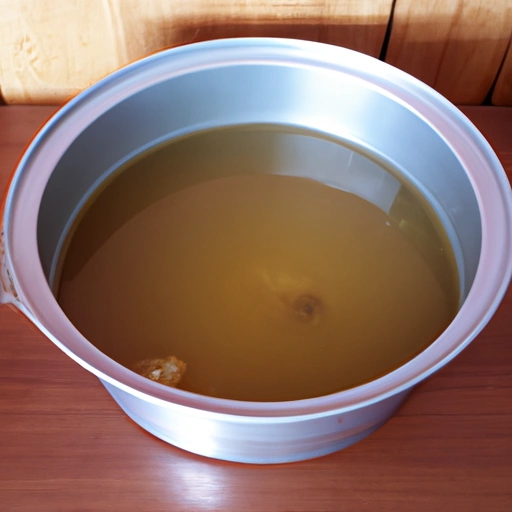Fish Stock
Description

Fish stock is a flavorful liquid used as a base for many dishes. It is made by simmering fish bones, heads, and other trimmings along with aromatics such as onions, carrots, and celery. Often, herbs and spices are added to enhance its flavor. Fish stock is a cornerstone ingredient in various cuisines and adds depth and richness to soups, stews, sauces, and risottos.
Common uses
Fish stock is commonly used as a base for soups, such as chowders and bisques, as well as in sauces for fish and seafood dishes. It is also used to cook rice or pasta, lending a subtle seafood flavor to the final dish. Chefs often use it to poach fish, ensuring that the delicate meat remains moist and flavorful.
Nutritional value
Calories
A typical serving (1 cup or 240 milliliters) of homemade fish stock contains approximately 40 calories.
Protein
The protein content in fish stock is around 5 grams per serving, depending on the type of fish used and the concentration of the stock.
Fat
Fish stock generally has a low fat content, usually less than 1 gram per serving.
Carbohydrates
With less than 1 gram of carbohydrates per serving, fish stock is a low-carb ingredient suitable for many diets.
Vitamins
Vitamins present in fish stock include various B vitamins, which are derived from the fish itself and the vegetables simmered within it.
Minerals
Minerals such as calcium, phosphorus, and iodine can be found in fish stock, sourced from the bones and cartilage of the fish.
Health benefits
Fish stock is rich in minerals that are released from fish bones during simmering, such as calcium and phosphorus, which are essential for healthy bones and teeth. The gelatin found in fish stock can also support joint health. Moreover, the omega-3 fatty acids prevalent in oily fish may be present in small amounts, contributing to cardiovascular health.
Potential risks
When consuming commercially prepared fish stock, one should be aware of the sodium content, which can be high. It is also important to note that fish stock made from certain types of fish may contain heavy metals or other contaminants, so it's crucial to source the ingredients from reputable suppliers.
Common recipes
Fish stock is a key ingredient in seafood paella, bouillabaisse, and cioppino. It is also used to add flavor to risottos and pasta dishes, as well as to enhance seafood stews.
Cooking methods
Preparing fish stock involves gently simmering fish bones and trimmings with vegetables and herbs for an extended period, usually 20 to 40 minutes, to extract maximum flavor without overcooking and turning bitter.
Pairing with other ingredients
Fish stock pairs well with white wines, such as Chardonnay or Sauvignon Blanc, which can complement the delicate flavors of seafood dishes. It also works with fresh herbs like dill, parsley, and tarragon.
Summary
Fish stock is a versatile and flavorful base that enhances a wide variety of dishes. It is low in calories and fat, making it a healthy addition to many recipes. Though it is simple to prepare, it can elevate the taste of soups, sauces, and other seafood dishes to a professional level. Whether you are a novice cook or an experienced chef, fish stock is an invaluable component in the culinary world, imparting subtle yet complex flavors to numerous dishes.